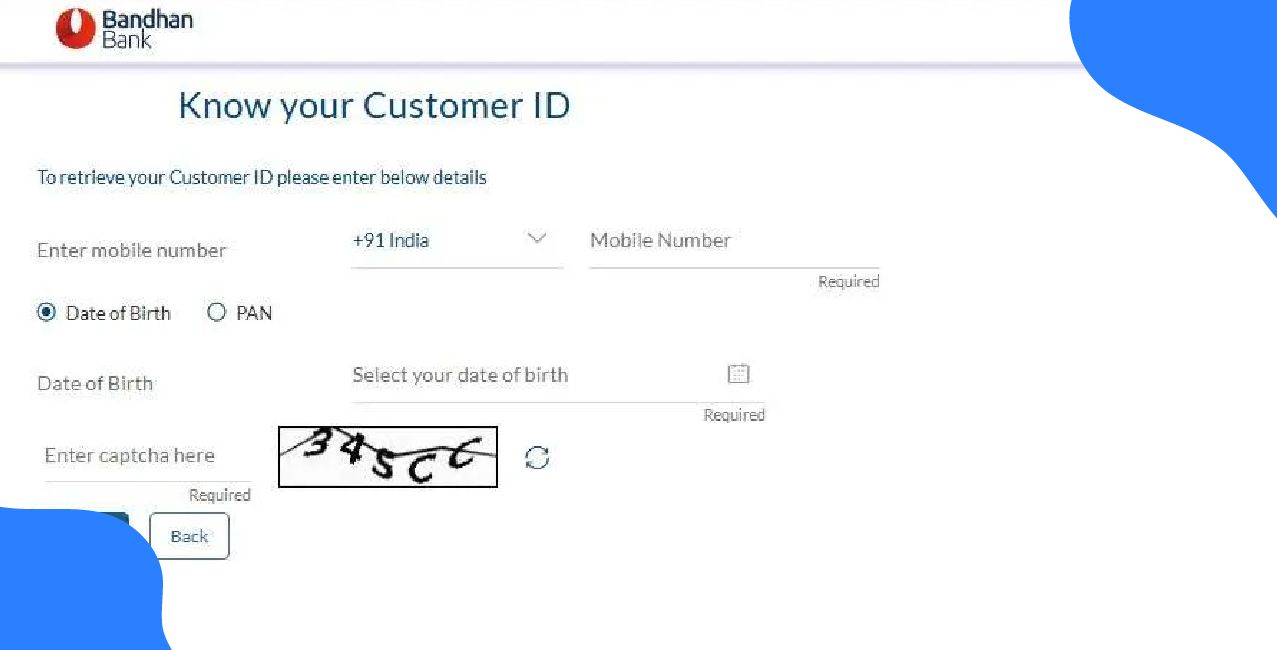
Author
LoansJagat Team
Read Time
5 Min
20 May 2025
Top Financial Planning Tips for Freelancers in 2025
Manu, a freelance graphic designer from Pune, earned ₹1,20,000 one month, and just ₹35,000 the next. “I love the freedom,” he says, “but the money swings keep me up at night.” If you’re a freelancer in India, chances are you’ve faced this too: irregular income, tax confusion, and no company-funded retirement plan.
A report by Business Standard stated that over 9-11 million gig workers are expected to join the Indian workforce by 2025, as more companies prefer project-based hiring. But with freedom comes the need to plan smarter, especially for your money.
This blog shares practical and straightforward tips to help freelancers in 2025 manage their money better, whether they’re earning ₹25,000 or ₹2,50,000 a month.
1. Understand Your Income Flow
Freelance income is like a rollercoaster; one month, you could be earning ₹1,00,000, and the next month, it could drop to ₹30,000.
Unlike a full-time job, there's no fixed salary date. This makes it harder to plan rent, bills, or savings. If you don’t track your income properly, you may run out of money even when you’re earning well. Understanding how your money comes in is the first step to managing it better.
Track Every Rupee
Use a simple Excel sheet or apps like Walnut or KhataBook. Write down every project, payment, and client. Don’t forget to record delayed or part payments. Knowing your numbers helps you plan better.
Identify Patterns
Read More – Salaried vs Self-Employed
Some freelancers earn more during the wedding season or festivals. Others see a drop during April–June. Look at the last 6–12 months. You might notice some months are strong and others are slow.
Calculate Your Average Income
If your income was ₹6,00,000 last year, divide it by 12. That’s ₹50,000 per month. This is your average monthly income. Plan your spending around this, not your highest income month.
Month | Income (₹) |
Jan | ₹40,000 |
Feb | ₹80,000 |
Mar | ₹30,000 |
April | ₹60,000 |
Average | ₹52,500 |
Know Your Payment Gaps
Clients may take 15–45 days to pay. Keep this in mind before taking on big expenses. Always ask clients about payment timelines.
2. Create a 2025-Ready Freelance Budget.
Freelancers often skip budgeting because they think income is unpredictable. But a flexible budget can save you from stress. It doesn’t need to be fancy.
Knowing your monthly needs, wants, and savings can bring peace of mind. Also, 2025 may bring new expenses like rising rent, AI tools, or upskilling courses. So, plan with that in mind.
- Write down your fixed monthly expenses like rent, groceries, and phone bills (for example, ₹15,000 rent + ₹6,000 groceries + ₹1,000 internet).
- Add business expenses like Canva, Zoom Pro, or paid ads (e.g., ₹2,000–₹5,000 per month).
- Set a monthly limit for food delivery or cab rides (₹2,000 max).
- Set aside money for irregular spending, such as birthdays, festivals, or travel (₹3,000–₹5,000).
- Always save at least 20% of your income. If you earn ₹50,000, save ₹10,000.
- Make a separate emergency fund, try to build at least ₹1,00,000 over time.
- Review your budget every 3 months. Adjust if you get more work or new expenses.
3. Separate Personal and Business Finances
Many freelancers use one account for everything. That’s a problem. It gets messy during tax season and confuses your real profit.
When you separate business and personal money, everything becomes clearer. You’ll know what you’re spending on your work and what you earn for yourself.
- Open a second bank account only for freelance payments.
- Ask all clients to send money to your business account.
- Pay for all work-related tools or travel using the same account.
- Transfer a “salary” to your account monthly, like ₹30,000 or ₹40,000.
- Use UPI labels like “Work” or “Personal” to track small payments.
- Keep a simple Google Sheet to note business spending, like client lunches or petrol.
- At the end of the month, check how much you earned after business costs.
4. Prioritise Emergency and Retirement Savings
Freelancers often forget to save because they feel there’s always time. But when work slows down or health takes a hit, not having backup money can be stressful.
Think about this: Riya, a freelance content writer from Delhi, had to pause work for 2 months due to dengue. With no savings, she borrowed ₹50,000 at 18% interest. Don't wait for a crisis. You must save for both short-term emergencies and long-term life after retirement.
Emergency Fund First
Save at least 3 to 6 months of your average monthly expenses. If your monthly cost is ₹40,000, your emergency fund should be ₹1,20,000 to ₹2,40,000.
Start Small But Start Now
Even ₹2,000 a month adds up. You can build ₹24,000 in a year. Keep it in a liquid mutual fund or savings account for easy access.
Retirement Is Not Far
Don’t depend on kids or late career boosts. Start investing in NPS (National Pension System), PPF (Public Provident Fund) or even SIPs.
Use This Table to Plan
Here's a quick guide to monthly savings for ₹5,00,000 retirement goal in 20 years:
Monthly Saving (₹) | Interest Rate | Years | Final Amount (₹) |
₹2,000 | 10% | 20 | ₹15,26,000 |
₹3,000 | 10% | 20 | ₹22,89,000 |
₹5,000 | 10% | 20 | ₹38,15,000 |
Automate It
Use auto-debit from your account. Set it and forget it. You won’t feel the pinch, and your savings will grow quietly.
5. Get Serious About Taxes
Freelancers often realise tax rules only when they get a notice or have to pay a big amount suddenly. Unlike salaried people, your income has no TDS unless a company deducts it.
So, you are fully responsible for planning and paying tax. Avoid last-minute tension by being ready throughout the year.
- Track every income and expense; don’t rely on memory during filing.
- Pay advance tax in 4 parts: June, Sept, Dec, and March.
- Keep a separate folder or drive with invoices, receipts, and proof of payment.
- Claim business expenses like internet, software, travel, and phone bills.
- Hire a CA if you earn over ₹5,00,000, it’s worth the money.
- File returns even if income is below the taxable limit to keep your record clean.
- Use ITR-4 to opt for the Presumptive Tax scheme under Section 44ADA.
Also Read - Best Side Hustles to Repay Your Personal Loan Faster
6. Invest in Insurance Protection
Many freelancers skip insurance, thinking, “I’ll take it when I earn more.” But one hospital bill can wipe out your savings. Insurance is not an expense; it’s a safety net. Freelancers need it more than salaried people because there’s no office coverage or paid sick leave.
Health Insurance is a Must
Take a policy of at least ₹5,00,000. Even a minor surgery can cost ₹1,00,000–₹2,00,000. Look for family floater plans if you’re married.
Term Insurance for Your Family
If others depend on your income, take a term policy. For example, a ₹50 lakh cover may cost just ₹500–₹600 per month if you’re in your 20s.
Personal Accident Cover
If your work involves travel or bike riding, take accident cover. It gives money in case of disability or injury.
7. Plan for Time Off & Unpaid Breaks
Freelancers don’t get paid leave. If you take a holiday or fall sick, there’s no money coming in. In 2025, with rising burnout and health issues, it’s even more important to take breaks, but wisely. Taking time off is fine, but you should be financially ready.
- Block unpaid leave days in your calendar, like 10 days in summer or during Diwali.
- Divide your yearly income goal over working months only. If your target is ₹6,00,000 and you work 10 months, you must earn ₹60,000 per month.
- Keep a “break fund” of ₹30,000–₹50,000 for slow or no-work months.
- Inform regular clients early so they can adjust their timelines.
- Avoid complete breaks during tight financial months. Take half days or weekends instead.
- Use breaks to upgrade your skills or plan your following projects.
- Don’t feel guilty about taking a rest; it helps you do better work later.
8. Diversify Income Streams
Freelancing is risky if you depend on just one kind of project or client. If that work stops, your income also stops. That’s why freelancers in India now do multiple things to earn from different places.
Try Digital Products
Create and sell ebooks, templates, or mini-courses. Even a ₹299 product can add up if 500 people buy it in a year, that's ₹1,49,500 extra!
Offer Consulting or Mentoring
If you have 3–5 years of experience, guide new freelancers. Charge ₹500–₹2,000 per session.
Build Passive Income
Start a YouTube channel, write a blog, or join affiliate programmes. These grow slowly but can give ₹1,000–₹10,000 per month with time.
9. Stay Financially Educated
You don’t need to become a finance expert. But knowing basic money tips can really help. Learning how to budget, file taxes, or invest will save money and reduce stress.
- Follow 2–3 simple finance YouTube channels in Hindi or English.
- Read one article a week on topics like income tax, UPI safety, or SIPs.
- Ask your CA to explain your return once a year.
- Talk to older freelancers about their financial mistakes.
- Avoid falling for quick money schemes or tips on social media without checking facts.
10. Work with a Financial Advisor (When You Can)
Many freelancers think advisors are only for the rich. Not true. A good advisor can help you plan for taxes, savings, and investments. Even one session can clear big doubts.
Choose the Right Type
Look for fee-only advisors. They charge upfront and don’t sell products. It keeps things simple and honest.
Ask the Right Questions
Don’t be shy. Ask what plan they suggest, how much risk is okay, and how much to save. Keep it practical and about your income.
Use a Basic Table to Compare
Here’s a simple way to check if an advisor suits you:
Criteria | Good Advisor | Not So Good Advisor |
Fee Type | Fixed / Hourly | Hidden in product |
Explains Clearly | Yes | Uses confusing words |
Pushes Products | No | Yes |
Listens to You | Yes | Talks too much |
Conclusion
Freelancing offers freedom, but it also demands financial discipline. In 2025, with income volatility, rising costs, and evolving work trends, freelancers in India must take control of their money.
If you're just starting or a few years into your journey, these financial planning tips, tracking income, budgeting smartly, saving consistently, and investing wisely, can help you stay stress-free and future-ready.
Remember, even small steps today can lead to big financial wins tomorrow. So start now, your future self will thank you.
FAQs
1. How much should a freelancer save each month?
Aim to save at least 20% of your monthly income, and build an emergency fund of 3–6 months' expenses.
2. Do freelancers need to pay advance tax in India?
Yes. If your total tax liability exceeds ₹10,000 a year, you must pay advance tax in four installments, June, September, December, and March.
3. What’s the best way to budget with irregular income?
Use your average monthly income (from the past 6–12 months) to plan your fixed expenses. Keep your budget flexible and review it quarterly.
4. Which retirement options are good for Indian freelancers?
Consider the NPS, PPF, or SIPs in mutual funds. These are long-term, tax-efficient options that build wealth gradually.
5. Is health insurance really necessary for freelancers?
Absolutely. Without employer benefits, you must buy personal health insurance, at least ₹5 lakh coverage, to protect your savings from medical emergencies.
Other Related Pages | |||
About the Author

LoansJagat Team
‘Simplify Finance for Everyone.’ This is the common goal of our team, as we try to explain any topic with relatable examples. From personal to business finance, managing EMIs to becoming debt-free, we do extensive research on each and every parameter, so you don’t have to. Scroll up and have a look at what 15+ years of experience in the BFSI sector looks like.

Quick Apply Loan
Subscribe Now


